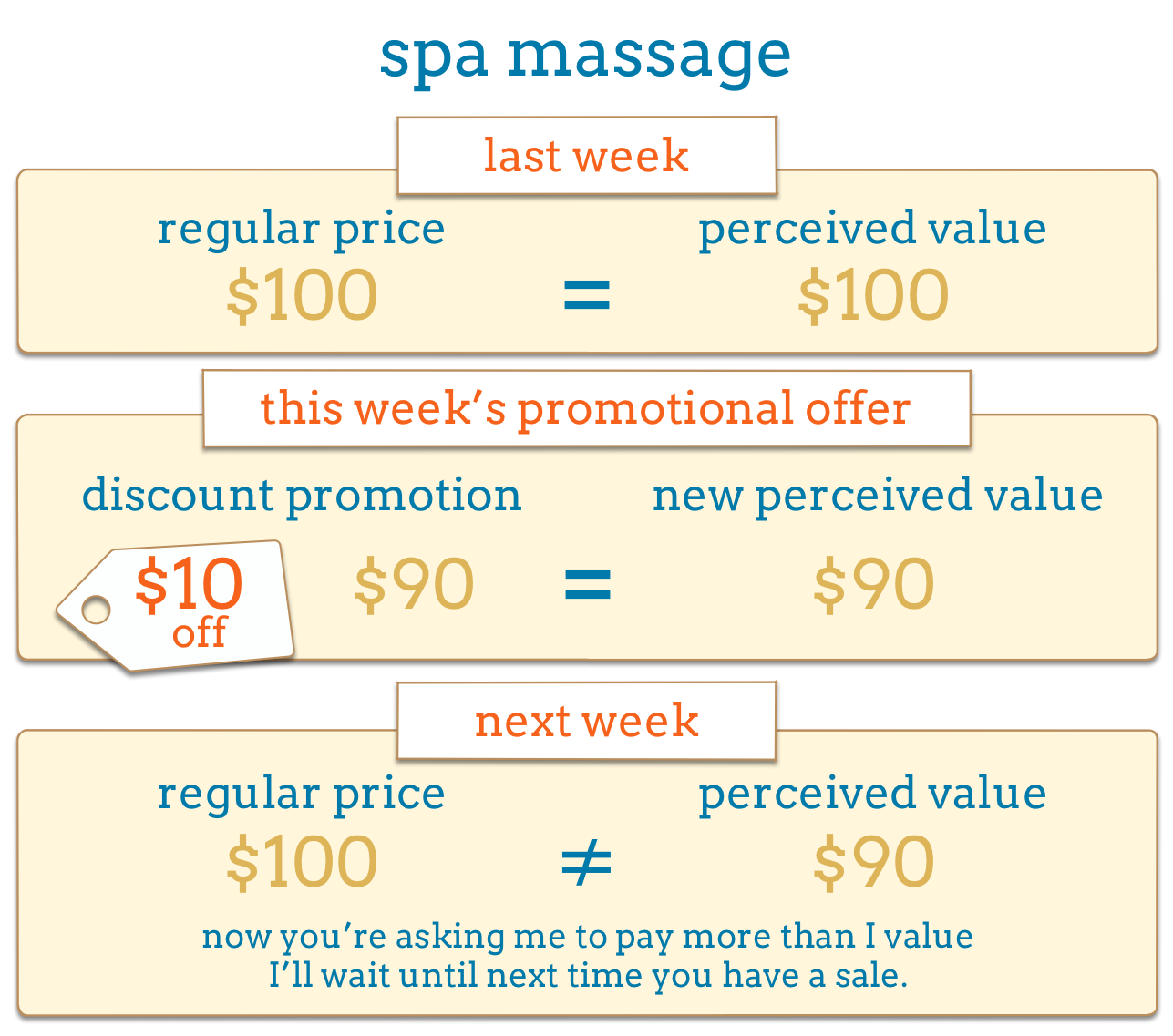Back to: Annual Strategic Marketing Plans to Create Long-Lasting Success
Lever: Increase Prices
How much a customer is willing to pay for your product often has little to do with the actual cost of the product. The cost of goods (COG) for a Starbucks coffee is much less than $3.00.
Perceived Value
What your customers are willing to pay for something is the perceived value of that product.
So, a $3.00 cup of coffee is worth it when:
- the coffee shop is open when I need it,
- they have the product I need/want (they haven’t run out of it),
- it is prepared just the way I like it (every time),
- it is delivered in a clean environment, and
- delivered by a friendly barista.
All of this is especially important for a morning caffeine pick-me-up ritual…and that is why Starbucks is successful. More times than not, they can deliver on most if not all of these.
So, when it comes time to increase your prices, you have to make sure you’re already delivering on the things your customers perceive as valuable.
Price increases can be tricky. If customers are highly satisfied with product quality and service – they won’t mind paying a little more.
If you haven’t increased pricing in a while, customers will sympathize with price increases related to inflation and cost of goods going up (specifically if you’re a restaurant).
However, if you take prices up too much, your customers will start to compare you to competition as an option for their purchase.
Trouble With Discounting
The problem with offering a discount or percentage-off your products or services is that people perceive that reduced price as the new value of the product.
Here is an example…
A spa, hoping to generate sales, offers limited-time $10-off their $100 massage. Now the price is $90. Yes, they book a few more at this lower price. But, customers now know they can pay only $90 for a massage at this spa. That has become the new perceived value. Now paying $100 feels overpriced.

